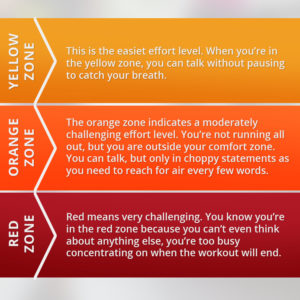
Here’s why you should consider relying more on your body’s cues, and less on pace.
It’s not just about the running pace friends. Pace is certainly one of the variables to review, but if you’re not careful, it can become your worst enemy.
Think about it. Elite runners line up to win the race. Sometimes that means earning a personal record time, but most times they can win without breaking their best time.
Tune into your body.
One of the most effective coaching tools I use is teaching athletes how to tune into their body and run by effort. By focusing on your body’s cues you are instantly connected to your greatest asset: your inner GPS.
The body knows effort, not pace, and when we only follow numbers, we risk both under training or overtraining. Pace provides very useful information, but it’s most useful for evaluating your performance after you finish your run.
Pace can lead you off course.
The problem with training by pace is that so many variables affect it. Your easy pace can quickly turn moderate to hard in the wind, heat, snow, or ice; after a sleepless night; or when you’re sick or menstruating. This is also true on race day. If you preselect a pace to follow, it may be too slow or too fast based on the conditions, the course, and other variables.
When you let go of running by numbers and begin to follow your body, you are better positioned to perform your best. When you follow your body’s response on any given day, you will always train at the optimal effort level, which helps you work out harder, recover more efficiently, and make faster progress.
Training by effort leads to your best performance.
It takes time to learn how to pace by feel, but the benefits are plentiful. I’ve had runners take minutes off personal records, get back to running after nagging injuries, and rekindle their joy for running again. It all starts with tuning out the numbers and tuning into your body.
Run in color.
I use a simple three-color zone system that allows athletes to learn how to pace themselves by their breathing rate and how they feel.

The Yellow Zone
We run aerobically or in what I call the Yellow Zone for our easy runs, recovery runs, and long runs. Running at this effort allows us to run for a long time, improves our fat-burning enzymes and isn’t very stressful on the body.
The Orange Zone
The Orange Zone is a step up from Yellow and hovers around the lactate threshold (red line), or the point at which we shift from using more fat for energy to using more glycogen. We run in this zone in workouts like tempo runs and long repeats to raise the redline which helps us run faster at easier efforts.
The Red Zone
When you cross over the red line, you run into the Red Zone or the effort level that is flat out hard, well outside your comfort zone. This is the effort where we run intervals, hill repeats, and any high-intensity workout. Training in this zone will improve fitness and speed and boost your metabolism for hours post workout.
When you follow your body’s response on the given day, you will always train within the optimal zone, which aids in efficient recovery, stronger workouts, and faster progression.
It takes time to learn how to pace by feel, but it’s an investment that will pay off down the road. And the benefits are plentiful. I’ve had runners shed minutes off personal records, get back to running after nagging injuries and rekindle their joy of running again.
It all starts with tuning out the numbers and letting go of what they represent. A slow run might be slower until it isn’t. A fast run becomes faster, on some runs. It all begins to make more sense when you feel the difference down the road.
I discuss this in this episode of The Coach Jenny Show Podcast.



Coach Jenny!
Something I really need to fix about my marathon running and longer distances, is knowing how to save enough for the end. With all the energy and nerves at the beginning, if I was to go by feel, I’m afraid my first couple of miles would be way too quick. How do I go by feel and still know that I’m holding back to end the race strong?…(and after I wrote that, I think I can answer my own question…keep it in the yellow…?)
Thank you!